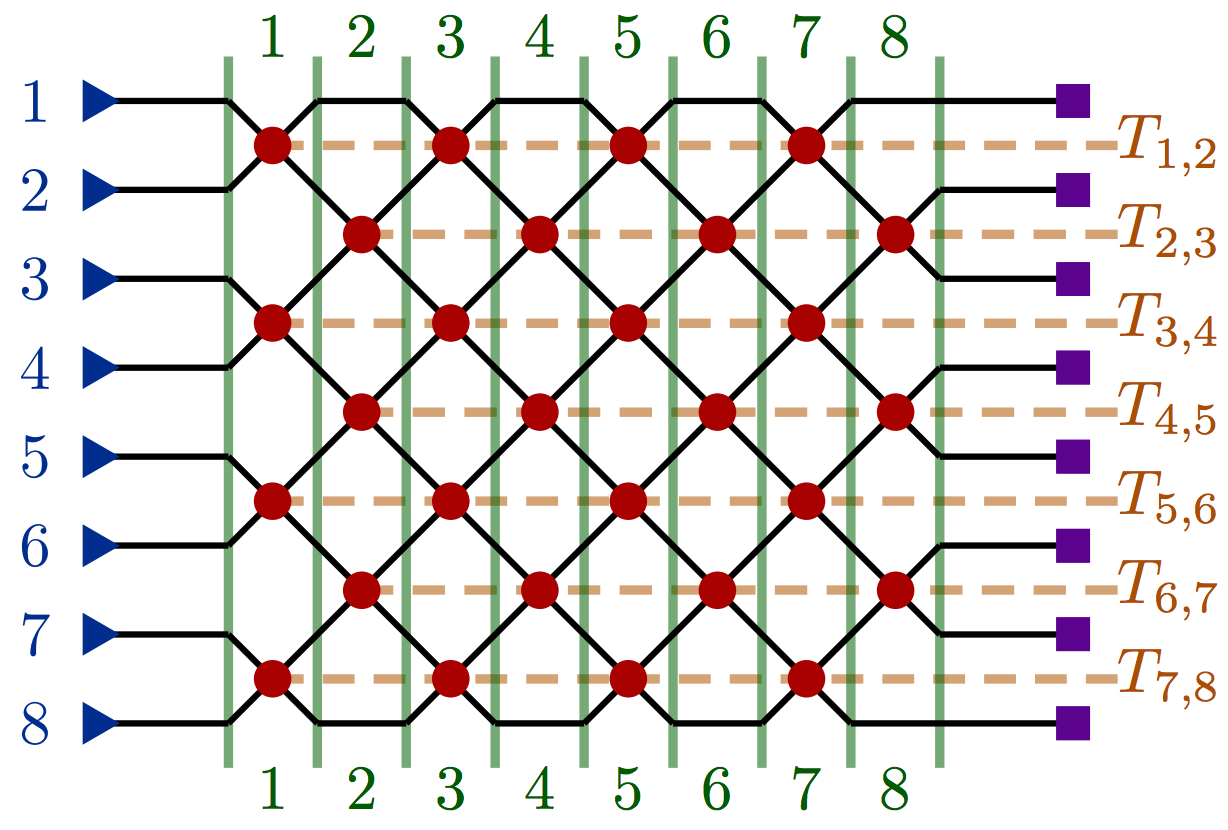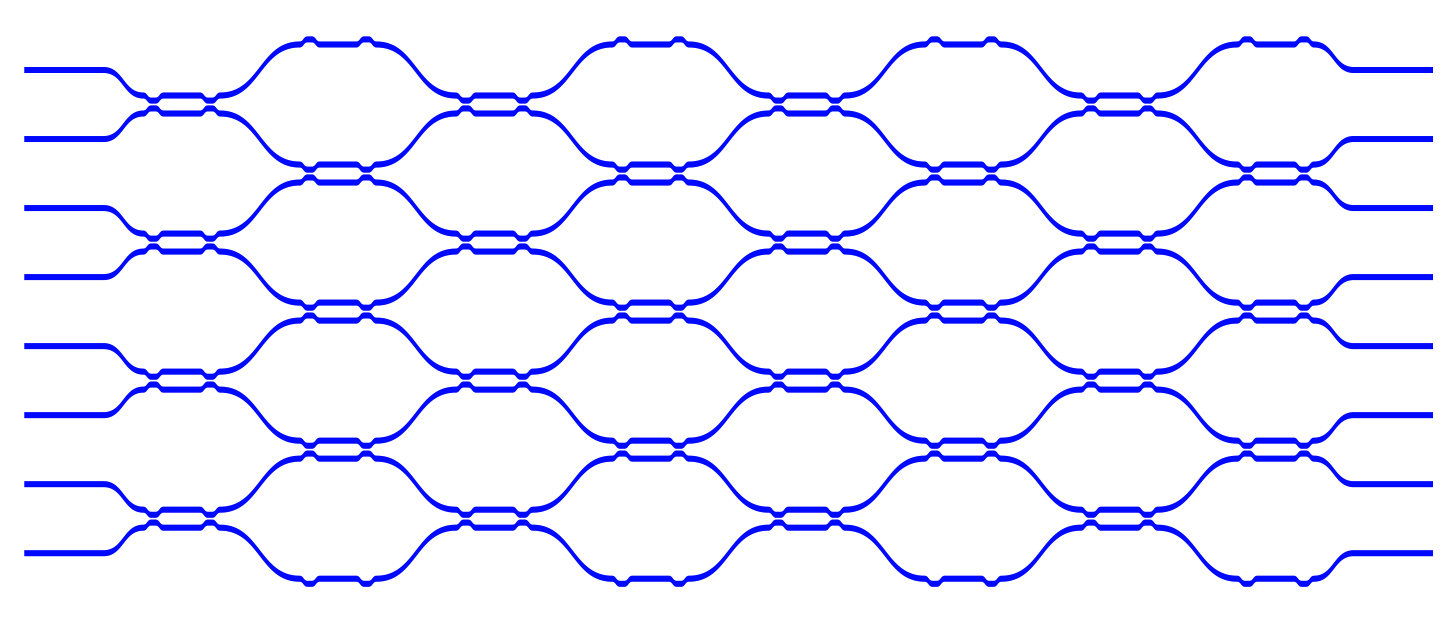Simulation
Macroscopic
We have built theoretical models of universal unitary photonic meshes, in different aspects, including wavelength multiplexing, information & error propagation/back-propagation, and scalable programming protocols. We have made several key findings about the behavior in these meshes. These findings, in part, have allowed us to simulate optical mesh architectures to learn unitary operators up to 100000x faster than what has currently been proposed. See our papers on mesh optimization, mesh programming, mesh error statistics and so on.
Microscopic
We designed and optimized photonic elements for our linear optical meshes using conventional electromagnetic simulation techniques such as FDFD and FDTD. See our papers on waveguide structures, grating couplers, and phase shifters!
Experiments
Using our simulation results, we have worked closely with professional founders including AMF, AIM and taped-out multiple generations of photonics integrated chips (PIC). Please see a microscopic image of a PIC chip under testing!
Design
We have built automated PIC design & layout pipelines in Python to quickly iterate on photonic designs: The Phox family. See the GitHub repos for PIC layout and tape-out (DPhox), experimental prototyping (Phox), Neural network applications (NeuroPhox), and Photonics simulations (SimPhox).
Experiments
We have setup the experimental testing and prototyping platform to efficiently test . We have demonstrated various applications from the taped-out PIC, including the first demonstration of backpropagation in photonics neural network. Please see our papers on photonics neural network, photonics phase imaging, photonics crypto-currency, and photonics astro-imaging!
Photonics Integrated Circuit Experiment Workflow

Simulating Matrix Optimization on Mesh
Mesh Diagram
Photonic Mesh Design

